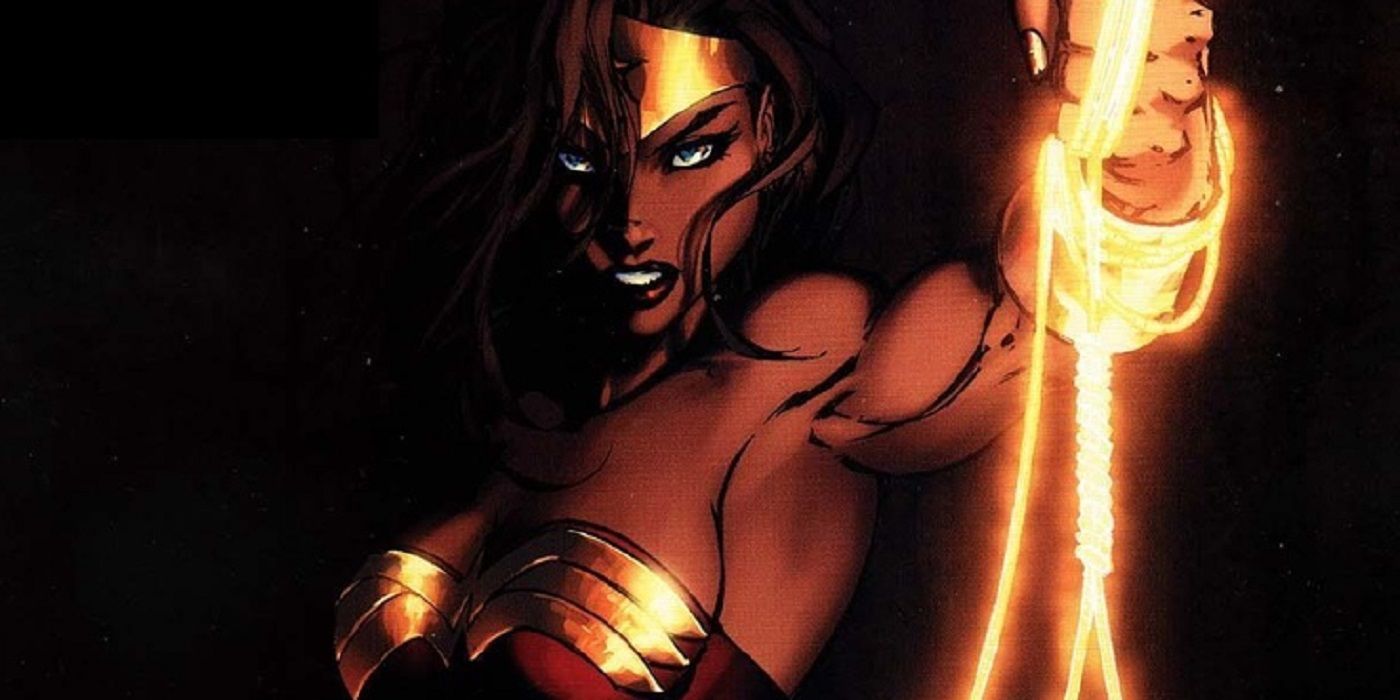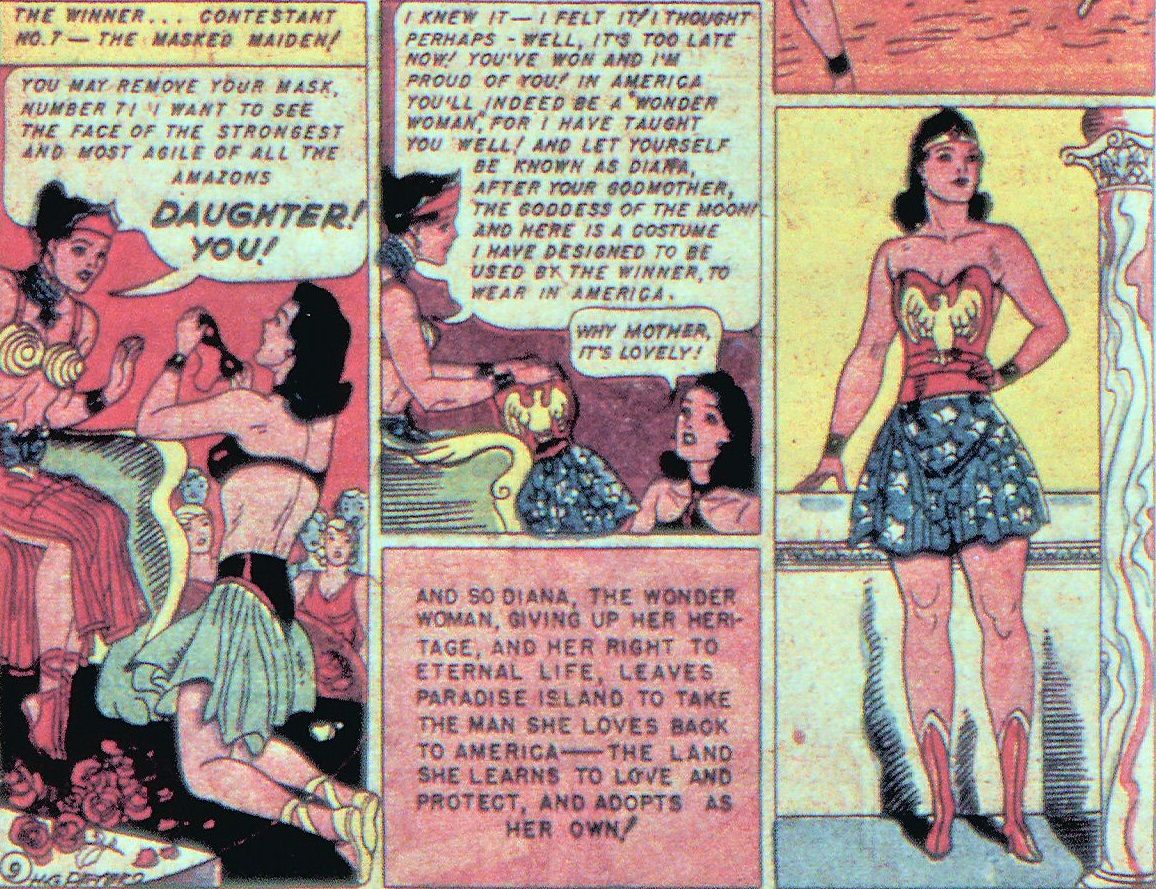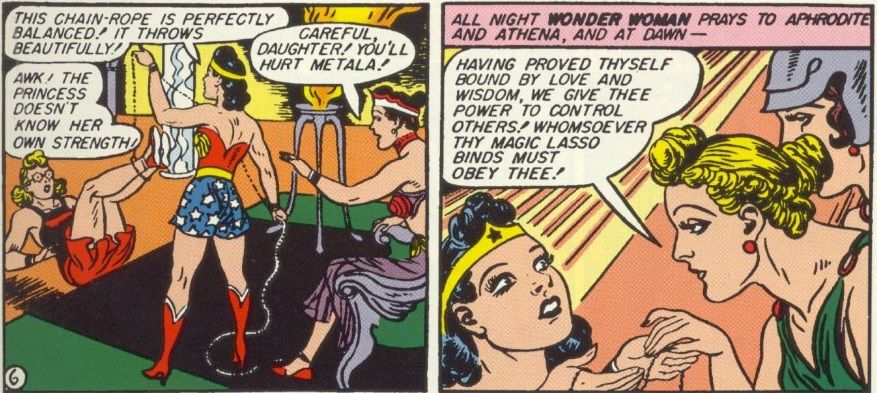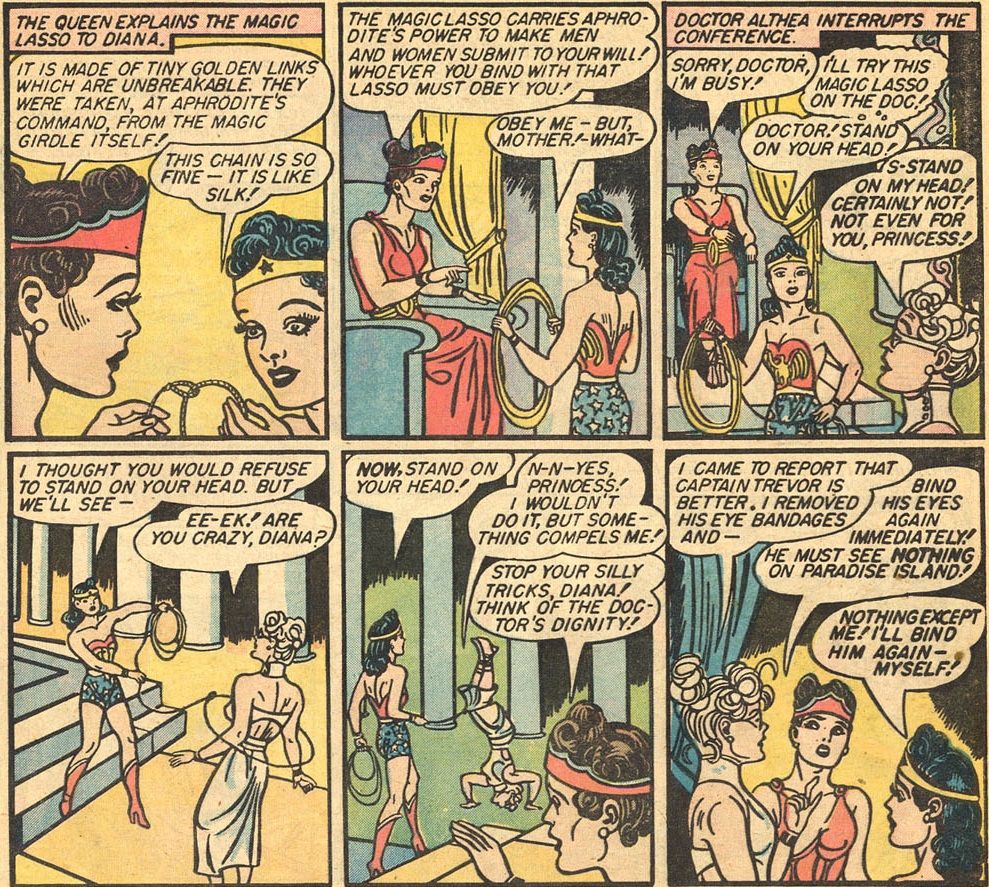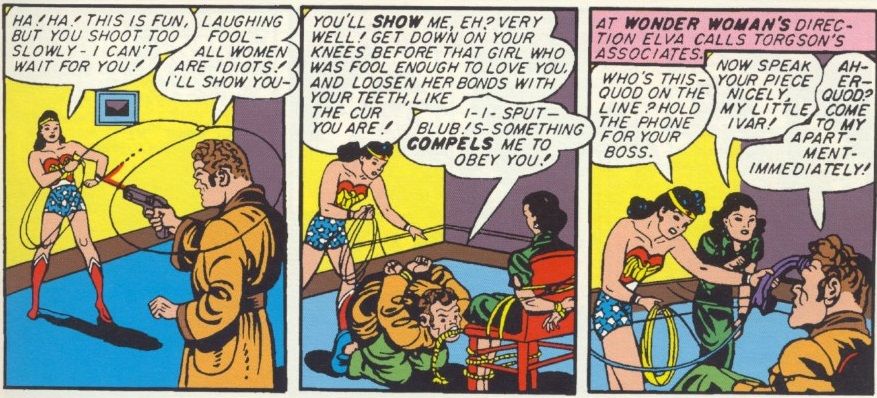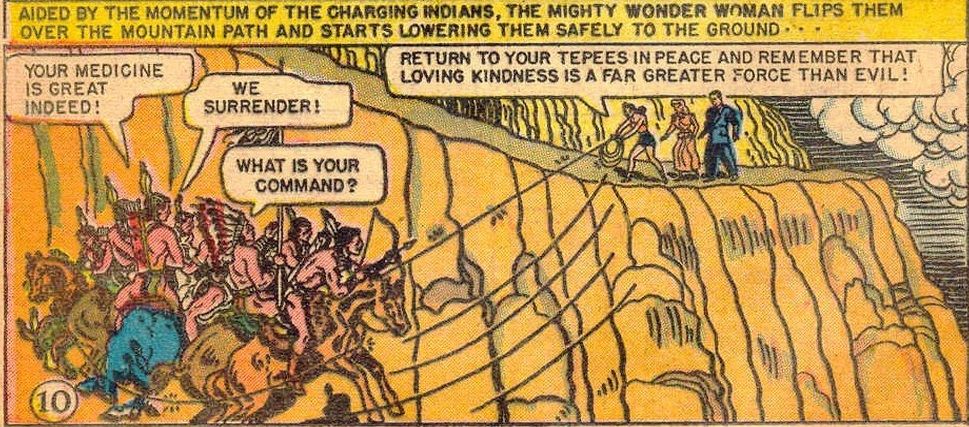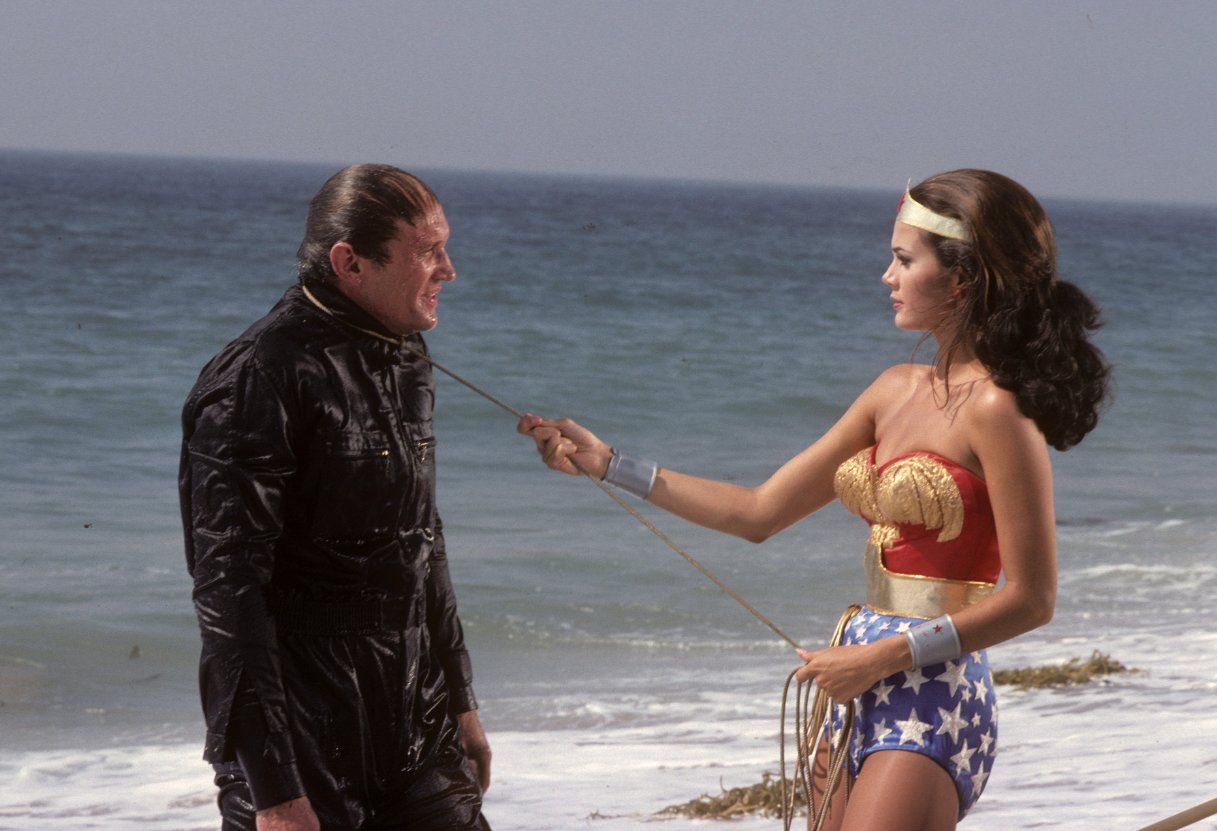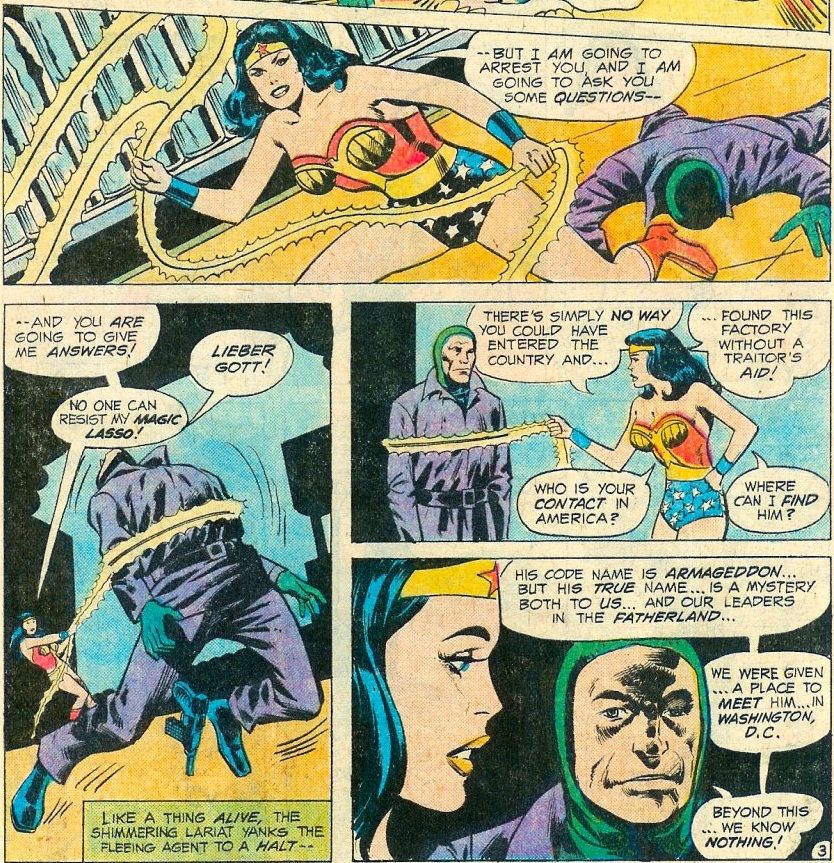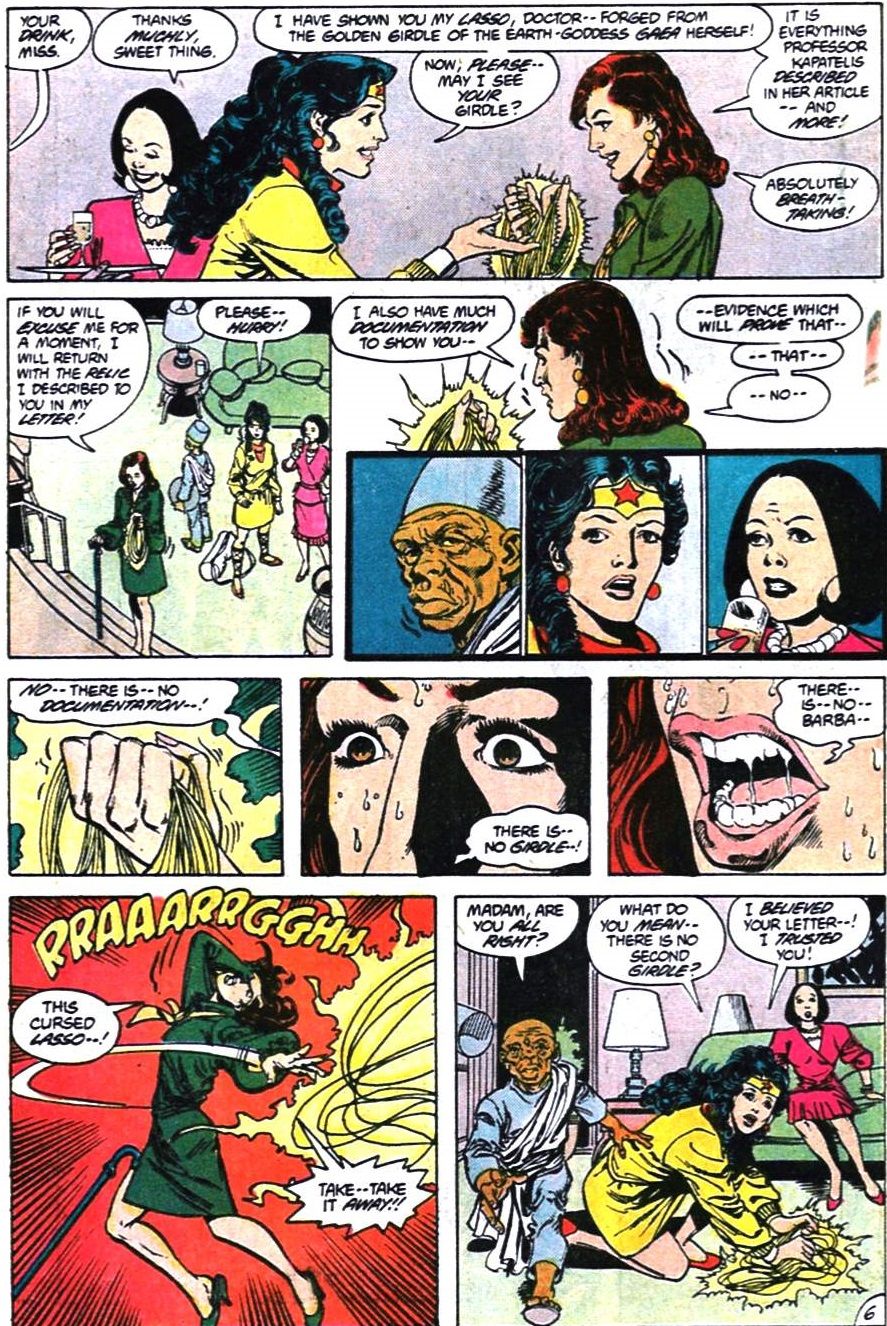Nearly every DC Comics fan is familiar with the basics of Wonder Woman - she wears bracelets that deflect bullets, she flies an invisible plane, and she has a magical lasso that makes you tell the truth. However, was that always the case? Or did her magic lasso at one point have an entirely different power?
RELATED: Wonder Woman: Pine Reveals Diana’s True Parentage
First off, it is important to note that when Wonder Woman debuted, she didn't have a lasso at all! When she took her first bow in 1941's All-Star Comics #8 (in a short story by William Marston and H.G. Peter to preview her then-upcoming lead role in a new superhero anthology series, Sensation Comics), her bullet-deflecting bracelets were the only weaponry that she had with her when she first put on her costume (she got her invisible plane in the first issue of the aforementioned Sensation Comics)...
It was not until the sixth issue of Sensation Comics that Wonder Woman finally received her lasso, but the introduction of the lasso was much different than you might expect. Queen Hippolyta had her craftswomen take her magic girdle and remove some of the chain links within it and turn them into a powerful, unbreakable lasso. After giving it to her daughter, Wonder Woman then prayed to Aphrodite and Athena and they then visit her and reveal that they have given her lasso a special property - anyone bound by it must obey Wonder Woman!
Naturally, this almost certainly tied in with a number of William Marston's personal beliefs. First off, he believed in the ultimate superiority of women and he felt that the world would be better if women were in charge, so therefore, it men were forced to obey women, things might turn out for the better. Secondly, though, Marston was clearly just into bondage period. It is not a coincidence that Wonder Woman's biggest weakness at the time was that if you bound her wrist, she lost her powers. That made it clear, then, that Wonder Woman would have to be bound all the time, for the same reason why Thor's hammer was constantly out of his grip for more than 60 seconds or why Superman always runs into criminals who have pieces of kryptonite. Wonder Woman ended up tied up in chains so many times in the early years of the series that National Comics literally had to tell Marston to stop chaining her up so much (amusingly enough, they were not objecting to her being tied up so much as the redundancy of him using chains all the time).
RELATED: Wonder Woman Star Gal Gadot Addresses Costume Criticism
Soon after the lasso was introduced, Wonder Woman got her own feature series (while still starring in Sensation Comics, as well. She was really popular at the time), and Marston and Peter re-told Wonder Woman's origin in Wonder Woman #1, but they made a few slight changes, and this included working the magic lasso into the origin. Bizarrely, Wonder Woman had some fun with the notion that she could make people do whatever she wanted, as she quickly used the magic lasso just to mess with the Amazon doctor who was treating Steve Trevor.
Now, this is not to say that the lasso was not used to make people tell Wonder Woman the truth, of course, as it certainly was, but only in terms of them being forced to obey her and so if she told them to tell her the truth, that's exactly what they would do, like this scene in Sensation Comics #7.
That was not, though, the main function of the lasso. While she obviously would often use the lasso to make people tell her the truth (as a means of acquiring actionable intelligence, there's few things better than forcing your enemies to tell you everything that you want to know and in terms of comic book exposition, it helps in that regard, as well), the main idea was that she imposed her will on other people, like this sequence from Wonder Woman #4 where she uses her lasso to make a bad guy untie a woman with his teeth...
Things are a bit muddled since Marston personally worked on developing lie-detectors in real life, and helped develop one aspect of the modern day polygraph machine. Thus, it seems to make sense that her lasso would be a truth-telling device since her creator created a truth-telling device. However, that seems to just be a bit of an incidental overlap.
When Marston left the series upon his death in 1947, the writer who took over from Marston, Robert Kanigher, was not nearly as interested in bondage as Marston was. So Wonder Woman began to rarely use the lasso on other people. When she did, though, the lasso still made people obey her, like this sequence in Wonder Woman #47 (by Kanigher and H.G. Peter), where Wonder Woman traveled back in time and compelled a tribe of Native American warriors to obey her through her lasso...
In addition, the Comics Code Authority went into effect in 1954 and clearly, some of the bondage aspects of the series would likely run afoul of the new Comics Code standards, so through a combination of the Comics Code and Kanigher's different take on the character, Wonder Woman mostly eschewed the use of her magic lasso on people for years. Things changed a bit with Wonder Woman #159 (by Kanigher and the art team that took over the series from H.G. Peter, Ross Andru and Mike Esposito), when Kanigher decided to set the book in the past, so that they could tell Golden Age-style adventures again (that experiment only lasted a few months). In that issue, Wonder Woman's magic lasso is explained again as making people obey Wonder Woman (or the other way around if someone bound her with the lasso!).
Now, if you guessed that introducing the concept of Wonder Woman being forced to obey someone else if she was bound by the lasso would come into play very soon, you would be right, as it was creepily used by Steve Trevor in just that fashion in Wonder Woman #167...
RELATED: Wonder Woman’s Bracelets: 15 Things You Need to Know
The first major change in the use of the magic lasso was in the Wonder Woman TV series, where in the first season, Wonder Woman would often use it to compel bound people to tell her the truth.
However, it was a bit unclear as to whether the truth-compulson was necessarily separate from the general "forced to obey" aspect of the lasso. In the later seasons, the lasso could also give people selective amnesia.
In the comics, though, the magic lasso maintained its general "make people obey her" power, even after the TV series had been on the air for a couple of years, as shown in 1977's Wonder Woman #233 (by Gerry Conway, Don Heck and Vince Colletta, the start of Conway's run on the series)...
RELATED: Wonder Woman’s Costumes, Ranked
Things all changed for good when Wonder Woman was rebooted by George Perez and Greg Potter following Crisis on Infinite Earths. In the second issue of the new Wonder Woman ongoing series (by Perez, Potter and inker Bruce Patterson), Wonder Woman received her lasso for the first time and it was explicitly dubbed "the lasso of truth" now...
Seven issues later, in Wonder Woman #9 (by George Perez, Len Wein and Bruce Patterson), the truth aspect of the lasso is demonstrated when Barbara Minerva is forced to tell the truth even when Wonder Woman isn't doing anything with the lasso!
Simply stated, the lasso has always been the "Lasso of Truth" from Wonder Woman #2 forward, which is now thirty years ago. It's amazing, though, how long it sometimes takes for iconic aspects of superheroes to actually be introduced.
Thanks to Tim Hanley, who provided a large chunk of the research for this piece.

